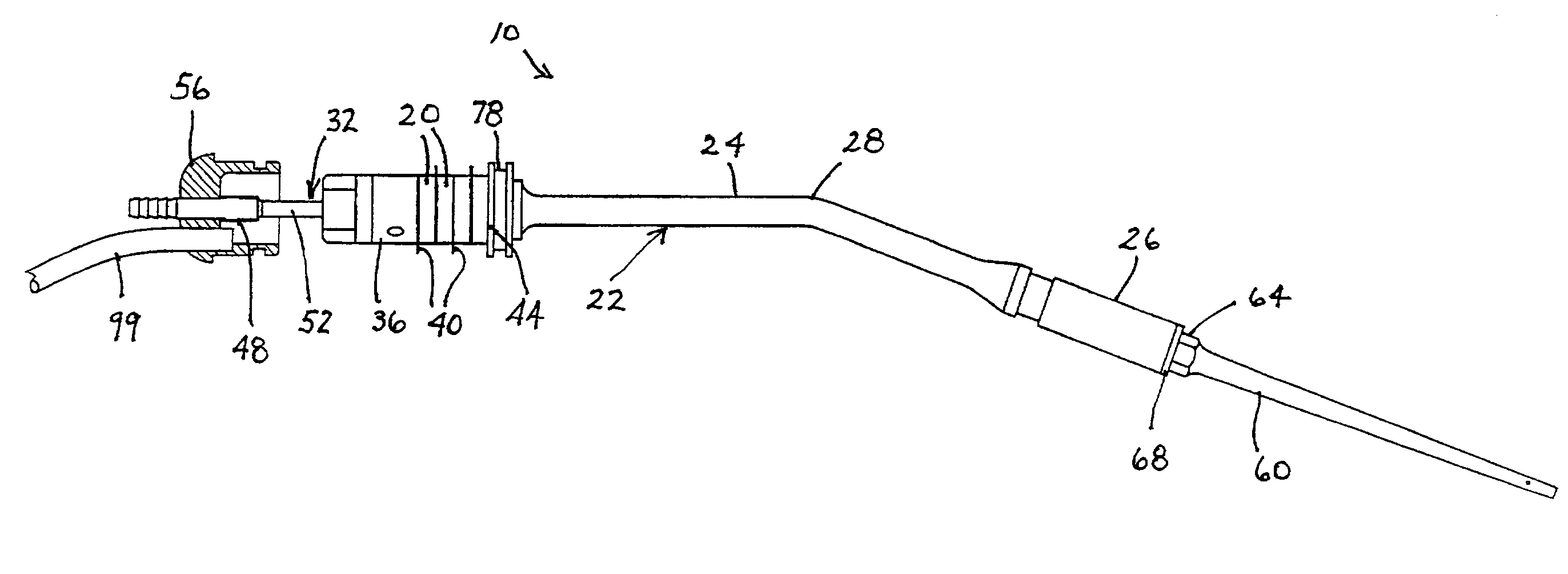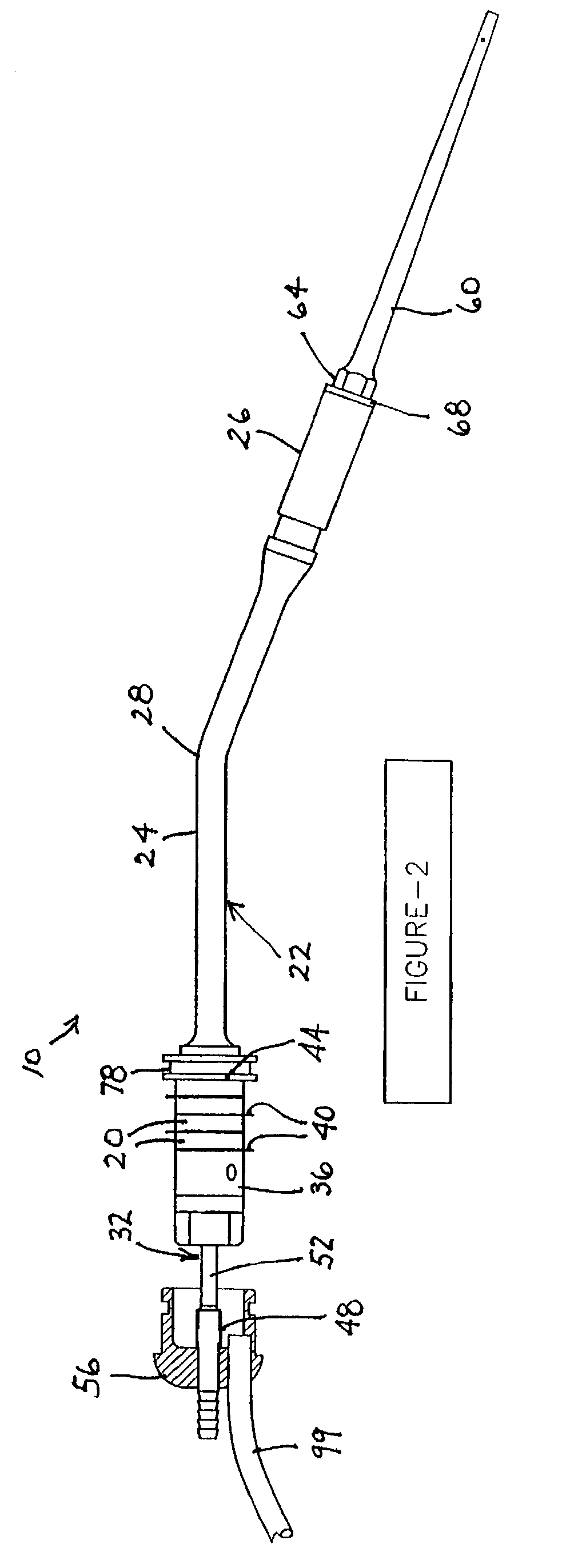High efficiency medical transducer with ergonomic shape and method of manufacture
a transducer and ergonomic technology, applied in the field of high-efficiency medical surgical transducers with ergonomically enhanced shapes, can solve the problems of inability to fully grasp the brain, enlarge the view of the delicate structure of the brain, and the disadvantageous length of the transducer/horn combination
- Summary
- Abstract
- Description
- Claims
- Application Information
AI Technical Summary
Benefits of technology
Problems solved by technology
Method used
Image
Examples
Embodiment Construction
[0029]A piezoelectric transducer is disclosed herein which incorporates a plurality of features which in concert exhibit features desirable in the performance of delicate medical operations. In addition, the various features may have utility in and of themselves in different applications. The terminology used in discussing the transducer, an associated instrument assembly, and a method of manufacture will be that generally accepted in the art of ultrasound engineering. The term “fixedly connected” when used herein to describe the coupling of a stud to an inertial or damping mass refers to a connection which is such that the stud and the inertial or damping mass were fabricated as a single or unitary object. Thus, the connection is rigid and essentially irreversible.
[0030]FIG. 1 shows a piezoelectric transducer 8 in a straight or unbent form, while FIG. 2 shows another transducer 10 in an angled or bent form. The transducer of FIG. 1 includes a stack of piezoelectric crystals 12 havi...
PUM
 Login to View More
Login to View More Abstract
Description
Claims
Application Information
 Login to View More
Login to View More - R&D
- Intellectual Property
- Life Sciences
- Materials
- Tech Scout
- Unparalleled Data Quality
- Higher Quality Content
- 60% Fewer Hallucinations
Browse by: Latest US Patents, China's latest patents, Technical Efficacy Thesaurus, Application Domain, Technology Topic, Popular Technical Reports.
© 2025 PatSnap. All rights reserved.Legal|Privacy policy|Modern Slavery Act Transparency Statement|Sitemap|About US| Contact US: help@patsnap.com



